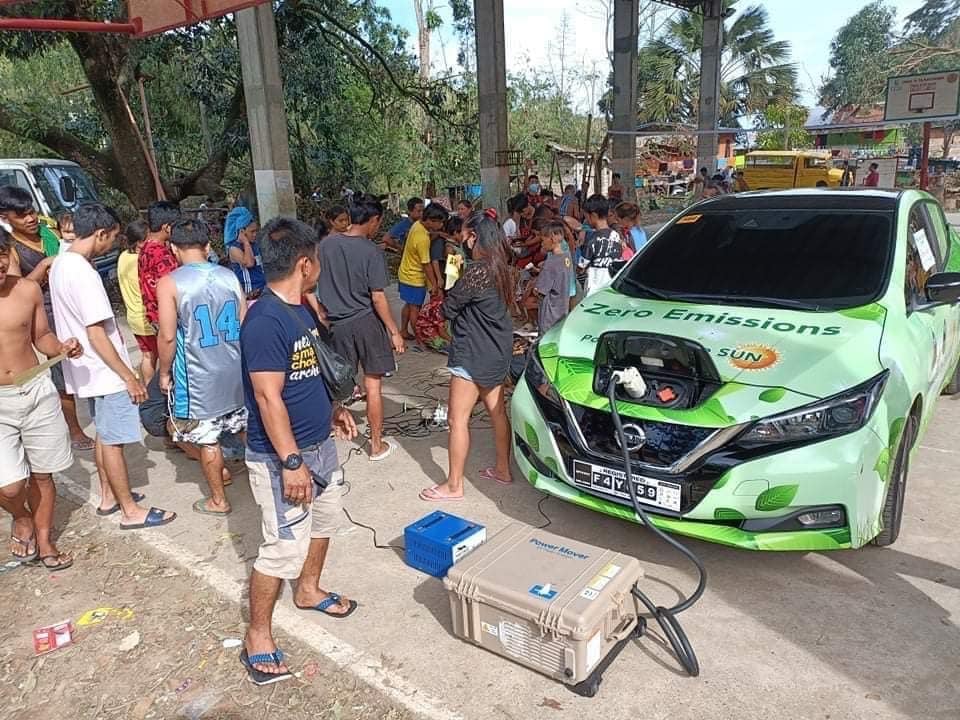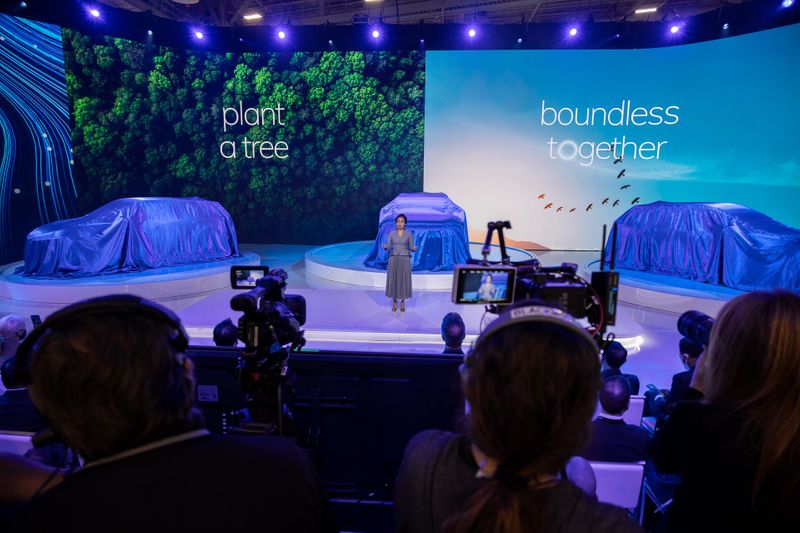THE Philippine automotive industry has a clear view of its future. Both the Chamber of Automotive Manufacturers of the Philippines, Inc. (CAMPI) and the Association of Vehicle Importers and Distributors (AVID) ended 2021 with a positive outlook for 2022.
Citing growths at 24 percent for CAMPI and 26 percent for AVID by the end of 2021, seem to indicate a recovery for the car industry in 2022. Based on car sales, except for the small hatchbacks, compact sedans and passenger cars continue to lose luster and against MPVs, SUVs, and vans.
The push and pull between multi-passenger vehicles and small, more personal transporters have also fueled the increase in the tiny electric tricycles, which are strangely allowed in the suburbs oftentimes ply the many major highways outside Manila crawling on the blind side beside trucks, buses, and other bigger vehicles.
Chinese brands are more aggressive in opening dealerships, stocking on parts and finding ways to woo customers away from the traditional brands, not only with price options (the price gap between Chinese-brand compact SUV is significant when compared to their Korean or even Japanese counterparts) but by bang-for-the-buck features. For example, the GAC GN8 luxury van can rival, if one does not pay attention to the nameplate, which is about a million pesos less than its closest rival.
Chip shortage and inventories
Major supply chain issues caused by silicon supply shortages to make the chips needed to run a car’s brain have also affected a market as small as the Philippines which ranks number 11 in total car sales in the whole Asian region, including China.
When the auto industry stalled to almost zero sales amidst the pandemic, never-before-offered promotions and sales offerings partially fueled the slow recovery. As sales grew towards the middle of 2021, a sudden spike in demand was seen in many markets, including the Philippines. This meant carmakers and dealers had to manage current (months old inventory as the pandemic had locked down showrooms) and incoming inventory.
The normal reaction to managing a huge number of unsold cars in the yard was to put off any new product launch until current stocks were depleted. Instead, high in the middle of the pandemic, carmakers chose to introduce models on top of current stock–a practice frowned upon by dealers just a few years ago.
Premium warranty and the used car market
There is a solution to the unsold inventory, though. Tie-ups with non-traditional, non-bank financing companies that are more open to investing in unsold inventory, repossessed, or pre-loved vehicles.
The non-traditional car financing option blossomed during the pandemic, expanded by companies like Yulon Financing Inc. Also as is the premium inspected vehicle or PIV, which is a used car that goes through a stringent quality inspection to increase its value to the customer. The PIV offers both competitions to new car sales but also opens new markets. This is a new trend that will develop further in 2022.
Though there is no definite data for the second-hand car industry, it is clear by a cursory examination of marketplace sales and the number of cars moving out of the bigger used car lots that it is also growing.
A new company that sprouted in September 2021, Premium Warranty Services Philippines, Inc. (PWSPI) has been aggressive in offering its inspection and warranty services tapping secondhand car dealers, financial institutions, and online portals to provide businesses and consumers with quality used cars so that buyers can purchase with confidence, and enjoy a worry-free ownership experience.
What PWSPI has done is professionalize the way used cars are offered to the market by running a 181-point check and certifying the vehicles as passing these tests. PWSPI certified vehicles get peace of mind as nothing is hidden and reports reveal the condition of a used car after the inspection.
“Whether you’re shopping at dealerships or online, we at PWSPI want to help car buyers find better quality secondhand cars. Our inspection service adds a new level of transparency to the market, providing the customer vital information about a car’s condition…no extra cost to buyers,” said Vince Socco, Chairman of PWSPI and GT Capital Auto & Mobility Holdings, Inc. (GTCAM).
New ways to travel
The pandemic has also changed the how and the why people travel. Public transportation has become even more unreliable and scary because of the lack of social distancing both in the vehicle and while waiting for it.
Small electric tricycles, e-scooters, even single-wheel electric unicycles have joined bikes on the bike lanes. Bikes too evolved to include some sort of electrification with motorized hubs and battery kits to upgrade from simply pedal power.
The virtual showroom is here to stay
The pandemic also changed the way people look for and buy cars. And the presence of the omicron variant and the other expected mutations of the SARS-CoV-2 virus has taken away “showroom visit” as a key result area in many dealers’ performance reports. Instead, the new key performance index is “virtual showroom inquiries.”
The pandemic introduced the market to virtual showrooms–a concept brought in as early as 2002 when Internet connections were slower but still allowed for primitive video streaming and simple messaging systems. Back then the online showroom seemed unacceptable to most car buyers who wanted “smell and feel” the cars. But since the COVID-19 virus mutates faster than innovations can catch up, consumers though wanting to experience new cars, are still scared of the virus.
This also led to test-drive vehicles being brought to serious sales inquiries with bank applications.
This online push will convert vehicle salespeople to being consultants or product specialists which will require a rethinking of how they should be trained. Already a lot of salespeople have set up YouTube channels or Tiktok features to sell cars. The successful ones have developed into content developers selling a brand rather than a car. As this is happening dealerships should learn to also lean and rethink digital platforms for showroom traffic.
The global online car buying market is expected to garner $723 billion by 2030, growing by 12 percent annually. Even in the Philippines, there are no signs of a digital slow down. Thus it is safe to say the virtual showroom is here to stay.
In-car entertainment transforms
Congestion means that travelers spend a minimum of one and a half to two hours on the road in traffic. Thus in-car entertainment will develop from a current feature and will be a trend that will only continue to develop.
It has evolved from a fancy audio system to an information panel that has everything from navigation to cabin temperature to tire pressure. The infotainment system is nothing new and revolutionary but there are new technologies that can be connected to it that will change the way people interact with their cars. These include wireless connections with smartphones, high-definition visuals, interactive media experiences, larger screens, and AI-powered virtual assistants.
Electrification is unstoppable
In the aftermath of the devastation of Typhoon Odette, Nissan Philippines Inc. President Atushi Najima narrated how the Nissan LEAF, a demonstration unit from the Nissan Cebu South dealership was used to charge mobile phones in areas where power was down.
“As a quick response to the disaster, we sent the company’s Power Mover vehicle-to-load accessory to Cebu so that it can make use of the Nissan LEAF as a mobile energy asset to supply electricity to areas where there are no electricity. With the help of Nissan Cebu South dealership, Cebu City Councilor Nestor Archival, we were able to provide their immediate communities with a mobile phone charging station powered by the Nissan LEAF. They were able to send the LEAF to pocket communities so that residents can communicate with their families and loved ones with fully charged mobile phones,” Najima narrated in his Facebook post.
The electric car will slowly power the automobile market in the Philippines but the process may be slow due to range anxiety and the lack of charging stations around the country.
Currently available electrified vehicles, like the Nissan LEAF, Chery Arizzo offerings from BYD as well as Porsche and Audi will continue to increase in sales alongside the hybrid offerings from Toyota. Hyundai and Kia are also in line for their own EV introductions in the Philippines, thus starting a new trend–private charging stations.
The idea of investing in a charging unit and installing this in a subdivision or a gasoline station is not new. Unioil began this trend in 2018 and other fuel suppliers will soon see the value of this as a business as more EVs pop into the market. Chinese-made small EVs cannot be discounted from the equation. And cooperation among electric vehicle sellers will be the best way to increase sales of EVs.





